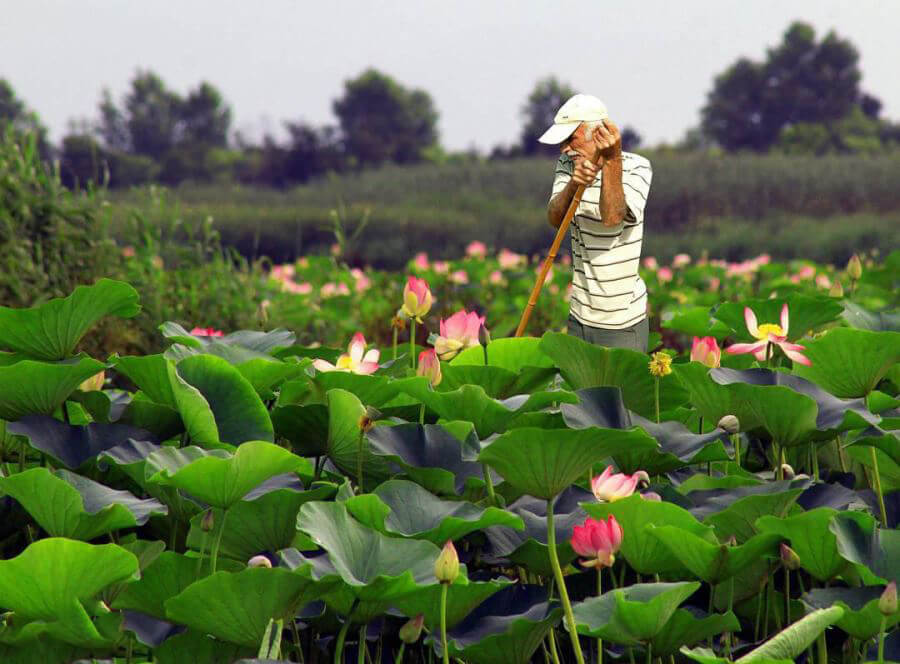Iran is famous for its unique variety of natural landscapes. Traveling around the country you will see endless hot deserts, tropical coastlines, dense forests, and plains. However, the hot and dry climate is reflected in the water coverage of the country: there are shallow rivers that dry up during the hot months. In Iran, there are several large lakes, which are essential parts of Iran’s ecosystem. Today we would like to introduce you to the largest and the most beautiful and unique lakes in Iran.
Tourist attractions:Lakes in Iran
Urmia Lake
Revered by ethnic Azeri’s as “the turquoise solitaire of Azerbaijan,” Lake Urmia was second only to the Caspian Sea as the largest saltwater lake in the Middle East and among Lakes in Iran, a haven for birds and bathers. Since the early 1970s nature and humanity have chipped away at this gem tucked in northwestern Iran, reducing its size by about 80 percent over the past 30 years. The flamingos that feasted on brine shrimp in this UNESCO biosphere reserve are mostly gone. So are the pelicans, the egrets, and the ducks. Even the tourists who flocked to Lake Urmia for therapeutic baths in its warm, hypersaline waters are staying away.
What remains are piers that lead nowhere, the rusting carcasses of ships half-buried in the silt, and white, barren landscapes of exposed salt flats. Winds that whip across the lake bed blow salt dust to farm fields, slowly rendering the soil infertile. Noxious, salt-tinged dust storms inflame the eyes, skin, and lungs of people as far away as Tabriz, a city of more than 1.5 million about 60 miles away. And in recent years Urmia’s alluring turquoise waters were stained blood-red from algae and bacteria that flourish in these waters, which are eight times as salty as the ocean, and then turn color when sunlight penetrates the shallows.
Urmia is one of the most beautiful natural sights in Iran. The lake is located in the northwest of the country and covers an area of 5200 km2. Because of the salt content in the water its deep blue color shimmers in the sun, attracting attention.
In places where the water level is low, you will see salt crystals which are visible and give a mystical view of the lake. Numerous large and small islands on the lake are the only “inhabitants of the lake”, as there are no living organisms in salt water.
Urmia is considered one of the largest lakes in the world, however, it began to dry up in the last 20 years: the hot harsh climate and a gradual decrease in annual precipitation have led to the reduction of the lake area. And the other unique fact – the increasing of salt concentration led to the changes in water color as the algae in the water began to blush. From satellite, the lake looks like a bloodstain.
Anzali Lake/ Lakes in Iran
Anzali Lagoon (Persian: تالاب انزلی) (also Anzali Mordab, Anzali Bay, Pahlavi Mordab, Pahlavi Bay or Anzali Liman) is a coastal liman, or lagoon, in the Caspian Sea near Bandar-e Anzali, in the northern Iranian province of Gilan. The lagoon divides Bandar-e Anzali into two parts and is home to both the Selke Wildlife Refuge and the Siahkesheem Marsh.
Although the lagoon suffers from pollution, it is known as a good place for bird watching. The lagoon's water ranges from fresh near the tributary streams to brackish near the mouth into the harbor and the sea. Studies indicate that in the 19th and early 20th Centuries that the lagoon had a much higher salinity.
The lagoon has decreased in size since the 1930s to less than a quarter of its former extent. However, in the last ten years (As of 2007) water salinity has increased both by the rise of the level of the Caspian Sea which has caused greater interchange of waters and due to greater salt transport in incoming "fresh" water due to increased upstream irrigation.
The lagoon has been listed in Ramsar Convention since 21 December 1975
The lake is located on the shores of the Caspian Sea, in the southwest of the country, in Gilan province. The lake and the small nearby village Tourbebar (40 km from the lake) attract a huge number of tourists who come to admire the view of the port.
Anzali is the largest freshwater lake in the country. The flora and fauna of the lagoon are quite varied: there are about 78 species of birds which perform a real “show”, and tourists are happy to come into the lagoon to enjoy the flight of birds, the beauty of the lake and lilies, as well as to ride on a boat.
Maharloo Lake /Lakes in Iran
Maharloo Lake (Persian: دریاچه مهارلو), also known as Daryache-ye-Namak is a seasonal Salt Lake in the highlands of the area of Shiraz, Iran. 27.0 km (16.8 mi) southeast of Shiraz, the lake salt is rich in potassium and other salts.
Rudkhane-ye-Khoshk, a seasonal river flowing through the city of Shiraz, brings most of the flood water to the lake bed during intense precipitation events. The lake water typically evaporates by the end of summer and exposes the white lake bed. By mid-summer and due to high evaporation rates and salt concentrations, the lake water turns pinkish red as a result of the red tide within the lake.
Salt Lake Maharloo is located at a distance of 27 km from Shiraz in Fars Province. It is another miracle of Iran, which is striking in its unnatural beauty. The uniqueness of the lake is its color: a special kind of algae in the lake changes the lake color into the bright pink, due to the high salinity and a small depth of the lake. During the dry season, the lake dries up. Another wonder of the lake is pink flamingos that spend winter on the lake.
Health care & cosmetic packages in Iran.
Hamun Lake
Lake Hamoon is the third largest lake in Iran after the Caspian Sea and Lake Urmia.
The
lake is made up of three small lakes connected by water abundance and forming the lake of Hamoon. The largest seafront of Sistan waters has a major role in the life of the people of the region, in addition to its natural, economic and social positive effects, there is also a special sanctity in Zoroastrianism. In the plain of Sistan, there are a series of ditches and natural holes that are converted into lakes and lakes in different months and are divided into three parts: Saburi, Pozdak, and Haman.
The total area of the Hamoons is 5660 square kilometers, of which 3820 square kilometers are Iran. Nevertheless, the Hamoon lake is dependent on the Hearmand River, and this dependency has caused any fluctuations in its water levels to create problems for the whole system. The Hearmand River drains the main artery into Hamoun, as well as the rivers Khashrood, Farah, Haroutrood, Shohrood, Hussein Abad and Vahnehoband.
Due to the 15-year droughts and the closure of the water entering the country from Afghanistan and the failure to pay the right of the Abe Lake from Afghanistan, Lake Hamoon is now completely dry and no life-threatening effects are found.
The size of the lake changes dramatically in different seasons, when it is in its best condition, reaches 5660 square kilometers. 3820 square kilometers are located in our country and the rest in the neighboring country of Afghanistan.
Due to the great change in the lake water surface, its shores also change. These lands are marshy and swampy, and only plants are thorns and bushes


Комментарии и вопросы